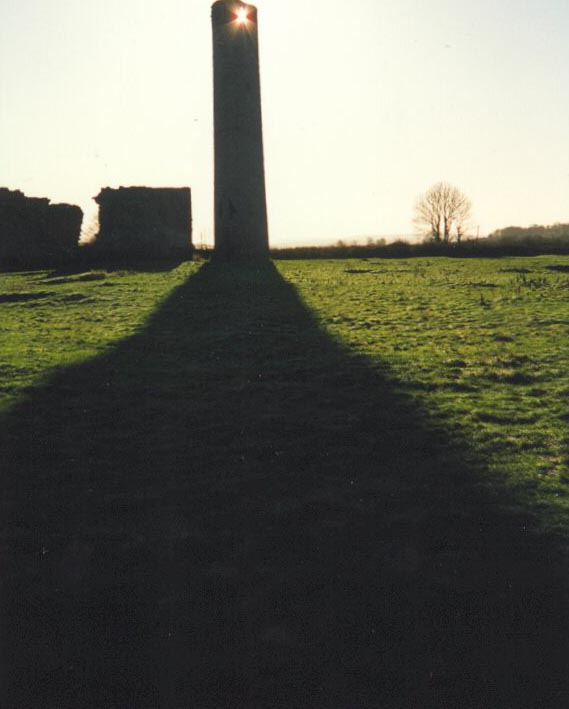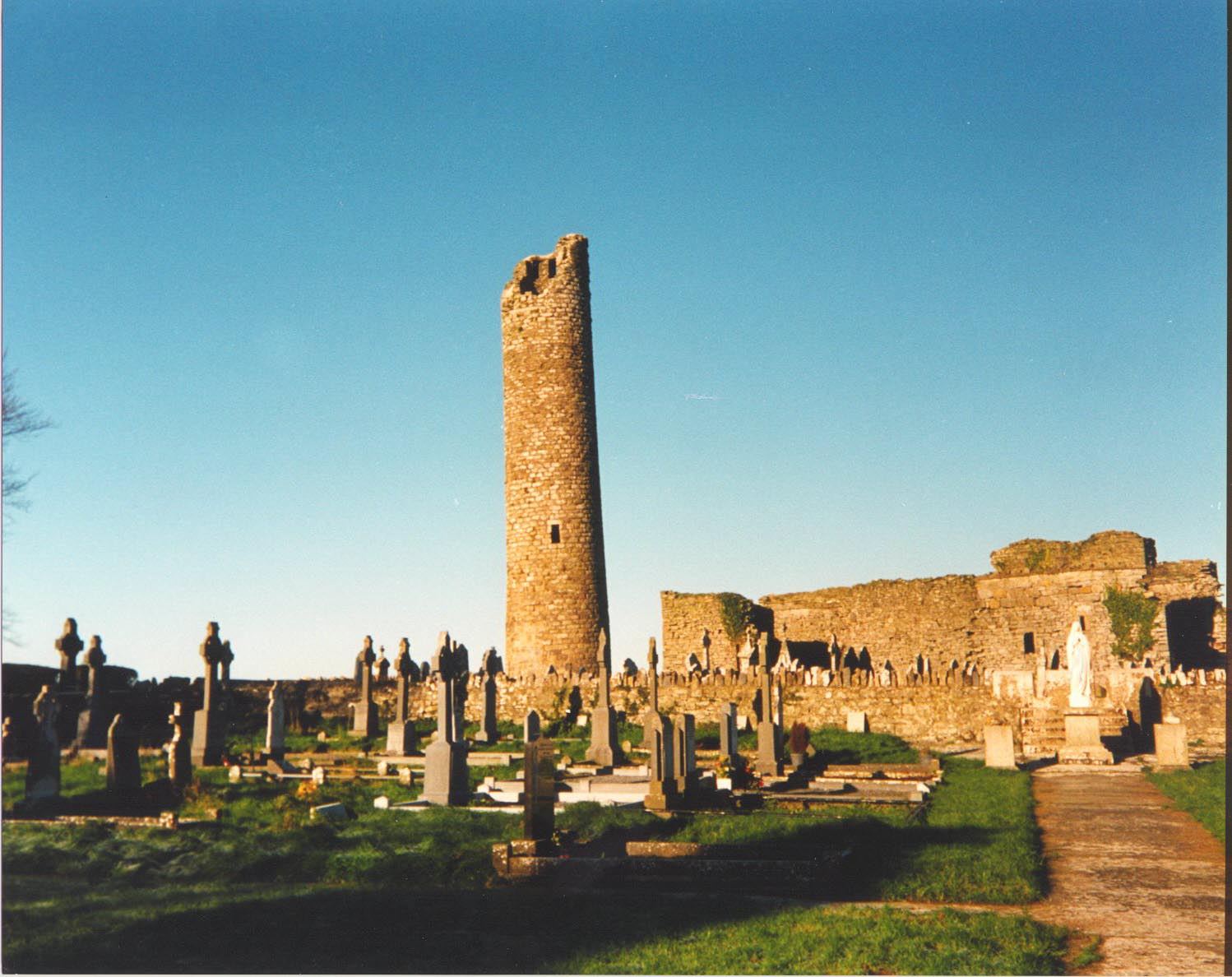Tullaherin.
 Tullaherin
is an ecclesiastical site dedicated to Saint Kieran. Is has been a place of great
importance since the earliest times and has seen continious religious worship on the same
site for over one thousand years. Opinion is divided about the meaning of the name
Tullaherin, Canon Carrigan suggesting that it derives from Tulach Thirim or 'dry mound',
others feel it should be translated as Tulach Chiarain, or the 'mound of St. Kieran'. This
second translation is supported by local tradition, which holds the pattern held on each
St. Kieran's day (March 5th) up to the 1820's, and the presence in the locality of a well
dedicated to St. Kieran as proof that the patron Saint and first Bishop of Ossory is
buried in the shadow of the round tower at Tullaherin. The pattern on March 5th every year
was so popular that in 1800 there were 75 tents and stalls set up to cater for the large
crowds.
Tullaherin
is an ecclesiastical site dedicated to Saint Kieran. Is has been a place of great
importance since the earliest times and has seen continious religious worship on the same
site for over one thousand years. Opinion is divided about the meaning of the name
Tullaherin, Canon Carrigan suggesting that it derives from Tulach Thirim or 'dry mound',
others feel it should be translated as Tulach Chiarain, or the 'mound of St. Kieran'. This
second translation is supported by local tradition, which holds the pattern held on each
St. Kieran's day (March 5th) up to the 1820's, and the presence in the locality of a well
dedicated to St. Kieran as proof that the patron Saint and first Bishop of Ossory is
buried in the shadow of the round tower at Tullaherin. The pattern on March 5th every year
was so popular that in 1800 there were 75 tents and stalls set up to cater for the large
crowds.

The round tower at Tullaherin
was most likely built by Cearbhall MacDunghal in the 9th century as a fortification
against the Norseman. It is about 73 feet high and had seven storeys, although the upper
storey is a later addition. The walls of the round tower are three feet thick.
When repairing the round tower
workmen found several walking sticks on top. These came from times past when young men in
the area challenged each other to throw the sticks over the tower with on hand while
resting the other hand against the wall of the tower.
The church at Tullaherin is a
9th century building, which was added to in the 13th century. It was further rebuilt in
1616 to convert it for use by the local protestant population. Other features of
historical interest at Tullaherin include two ogham stones and a marigold stone. Marigold
stones date from pre-Christian or early Christian times and were used to mark burial
sites.

Back To Kilkenny.
Kilkenny
Castle, Saint Canice's Cathedral, Rothe House, Black Abbey, Kells Priory, Tullaherin, Cantwell Fada, Jerpoint Abbey,
Inistioge.
 Tullaherin
is an ecclesiastical site dedicated to Saint Kieran. Is has been a place of great
importance since the earliest times and has seen continious religious worship on the same
site for over one thousand years. Opinion is divided about the meaning of the name
Tullaherin, Canon Carrigan suggesting that it derives from Tulach Thirim or 'dry mound',
others feel it should be translated as Tulach Chiarain, or the 'mound of St. Kieran'. This
second translation is supported by local tradition, which holds the pattern held on each
St. Kieran's day (March 5th) up to the 1820's, and the presence in the locality of a well
dedicated to St. Kieran as proof that the patron Saint and first Bishop of Ossory is
buried in the shadow of the round tower at Tullaherin. The pattern on March 5th every year
was so popular that in 1800 there were 75 tents and stalls set up to cater for the large
crowds.
Tullaherin
is an ecclesiastical site dedicated to Saint Kieran. Is has been a place of great
importance since the earliest times and has seen continious religious worship on the same
site for over one thousand years. Opinion is divided about the meaning of the name
Tullaherin, Canon Carrigan suggesting that it derives from Tulach Thirim or 'dry mound',
others feel it should be translated as Tulach Chiarain, or the 'mound of St. Kieran'. This
second translation is supported by local tradition, which holds the pattern held on each
St. Kieran's day (March 5th) up to the 1820's, and the presence in the locality of a well
dedicated to St. Kieran as proof that the patron Saint and first Bishop of Ossory is
buried in the shadow of the round tower at Tullaherin. The pattern on March 5th every year
was so popular that in 1800 there were 75 tents and stalls set up to cater for the large
crowds. 
